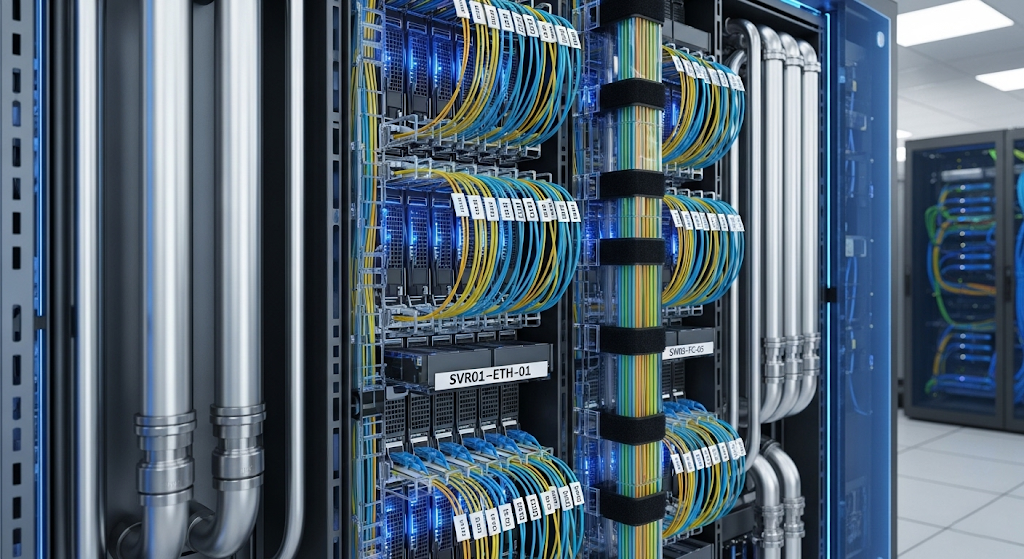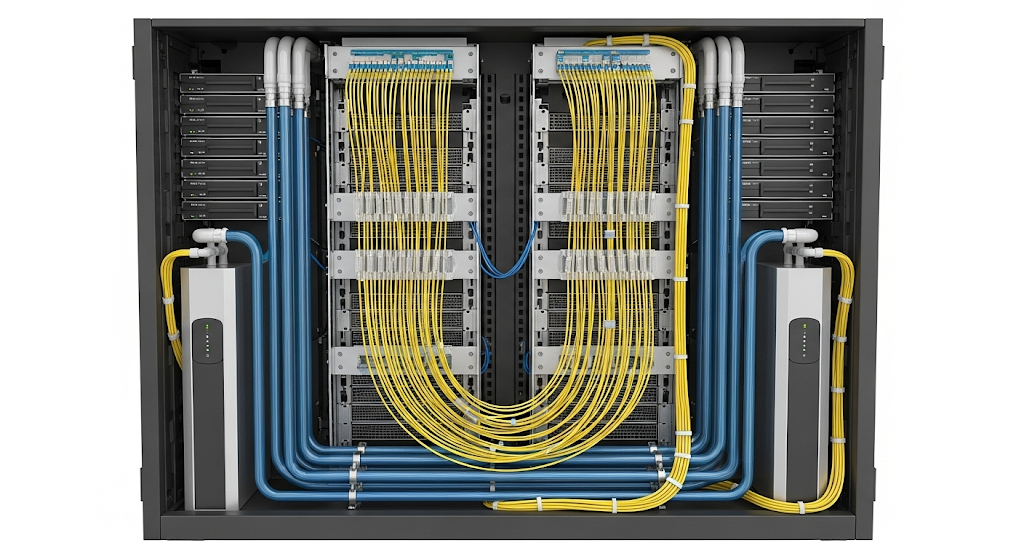
With the rapid growth of artificial intelligence (AI) and high-performance computing (HPC), the heat density of data center racks has been continuously increasing, and traditional air-cooling methods can no longer meet the demands of ultra-high-power workloads. Industry reports indicate that current GPU clusters can exceed rack power levels of 100 kW under full load, and air cooling faces the risk of thermal runaway. Liquid cooling leverages the high thermal conductivity and heat capacity of liquids to replace air for heat dissipation, significantly reducing data center energy consumption, improving cooling efficiency, and lowering noise and total cost of ownership. Practices have shown that liquid cooling can reduce a data center’s PUE to below 1.2 while decreasing energy and water consumption throughout its lifecycle.
Currently, liquid cooling mainly includes two technical approaches: cold plate cooling and immersion cooling. Cold plate cooling offers high compatibility and reliability and has become the mainstream solution, while immersion cooling, with its superior heat dissipation performance, is applied in some supercomputing projects. Industry forecasts suggest that the adoption rate of liquid cooling will continue to rise, the market will maintain rapid growth, and data center infrastructure is evolving toward higher energy efficiency and sustainability.

Challenges of Fiber Optic Cabling in Liquid-Cooled Systems
The introduction of liquid cooling brings new challenges to traditional fiber optic cabling design. First, limited routing space: liquid cooling pipes and equipment occupy significant rack space, narrowing available fiber pathways and requiring more precise planning and design. Second, material contact risk: in immersion cooling environments, servers and fiber connectors are submerged in non-conductive coolant. Standard PVC-jacketed fiber patch cords can harden and lose flexibility after long-term contact, and coolant infiltration at the fiber end face can cause severe attenuation or even communication interruptions due to refractive index differences. Third, increased density leads to higher management complexity: liquid-cooled data centers often pursue higher rack power and bandwidth density. A single 1U high-density patch panel can support hundreds of fiber cores, and individual racks may deploy thousands of fibers, sharply increasing the number of patch cords and connectors, which complicates labeling, cable management, and maintenance. In summary, traditional fiber cabling needs to adapt to liquid-cooled environments in routing planning, material compatibility, and maintenance management.
New Requirements for Fiber Patch Cords in Liquid-Cooled Racks
In liquid-cooled racks, fiber patch cords and cabling systems need to meet higher performance requirements:
High Flexibility: Patch cords must support very small bend radii to adapt to complex rack routing. Micro-fiber solutions (0.5–2 mm diameter) enable more compact cabling.
Corrosion Resistance: Patch cord jackets should be made of materials resistant to coolant corrosion, such as synthetic rubber, to prevent degradation.
Water and Dust Protection: Especially for immersion cooling, IP68-rated waterproof fiber connectors or sealing kits should be used to prevent coolant infiltration.
Miniaturized Design: High-density patch cords and accessories allow more connections in the same space. For example, a 1U high-density panel can support hundreds to thousands of fiber cores, meeting ultra-high bandwidth demands.
Thermal Performance: Patch cord materials and structure must withstand higher internal rack temperatures while avoiding stress from thermal expansion. Designs should balance heat dissipation and signal integrity requirements.

Key Points for Coordinated Design of Fiber Cabling and Liquid-Cooled Racks
Patch Routing: Use dedicated cable trays, organizers, or conduits to separate fiber patch cords from cooling pipes, avoiding interference and abrasion. Patch cord lengths should be customized to prevent excess slack.
Interface Protection: In immersion scenarios, use waterproof and oilproof connectors (e.g., IP68) and equip fiber ports with dust caps. For cold plate racks, choose patch cords with rubber seals or laser-angled end faces to improve vibration resistance and prevent leakage.
Pipeline Layout Coordination: Collaborate with liquid cooling system designers to plan internal rack piping and cabling routes. Usually, patch cords are routed from the top or rear side of the rack, avoiding main coolant paths and making use of reserved routing spaces on the back or top panels.
Standardized Labeling and Management: Follow best practices for labeling and zoning, such as using patch cord tags and color coding, and reserve organizers in racks to keep cables tidy. These measures ensure maintainability and scalability in limited spaces.
The image above shows a high-density fiber patch panel used in data centers. A 1U rack can accommodate hundreds to thousands of fiber cores, achieving higher port density. In liquid-cooled racks, such high-density equipment is typically paired with rigorous cable management solutions (e.g., custom-length patch cords, end-face labels, organizers) to ensure stable and reliable deployment and maintenance in compact environments.
Our Fiber Cabling Solutions for Liquid-Cooled Environments
To address the specific cabling requirements of liquid-cooled data centers, our company provides professional custom fiber patch cords and compatible rack solutions. Our fiber patch cords use high-performance materials and stringent manufacturing processes, meeting IP68 protection standards, offering excellent resistance to coolant corrosion and temperature fluctuations while maintaining exceptional flexibility. Products are compatible with both cold plate and immersion racks, supporting MPO/MTP、VSFF and other high-density interfaces, helping clients deploy more bandwidth in limited spaces. Complementary rack solutions include routing systems with reserved coolant space, weather-resistant patch panels, and anti-vibration components, ensuring the overall cabling system is highly reliable and flexibly deployable. With our data center cabling solutions, users can quickly build or retrofit liquid-cooled racks, achieving the optimal balance between efficient cooling and high-speed interconnectivity.
Contact Us
As liquid cooling becomes increasingly adopted in data centers, coordinated design between liquid-cooled racks and fiber cabling will be key to enhancing system performance and maintainability. We look forward to providing professional support: potential clients and technical experts are welcome to contact us at any time to access more technical materials and customized solutions, helping build highly efficient, reliable, and sustainable liquid-cooled data center network infrastructure.
Related articles
Share the page:
Contact US
If you want to know more about us, you can fill out the form to contact us and we will answer your questions at any time.

3 Responses
I was recommended this website by my cousin I am not sure whether this post is written by him as nobody else know such detailed about my difficulty You are wonderful Thanks
Your blog is a treasure trove of valuable insights and thought-provoking commentary. Your dedication to your craft is evident in every word you write. Keep up the fantastic work!
I do not even know how I ended up here but I thought this post was great I do not know who you are but certainly youre going to a famous blogger if you are not already Cheers